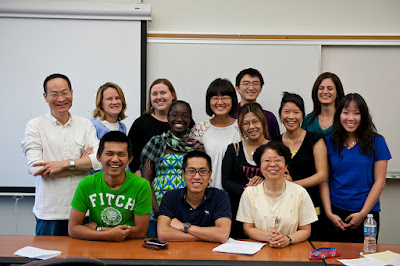2017 in Review

2017 has been an eventful year. Here’s what would go down in our memory lane: We moved to a new office space! With a sponsorship of the School of Computer Science and Engineering, Nanyang Technological University (NTU) in Singapore, we got a very spacious, well-equipped co-working space in the school’s Innovation Lab. NTU Singapore was ranked third globally and 1st in Asia , just after Massachusetts Institute of Technology (MIT) and Carnegie Mellon University. This was for its Artificial Intelligence (AI) research, by citation impact, according to the Data from Elsevier’s Scopus provided to Times Higher Education. Thank you for your generous sponsorship! We are very eager to work alongside top players in the field. 2017 was a year where we left our first footprints around Asia Ladon’s mobile app was one of finalists nominated for the Best Innovative Infocomm Product (Tertiary) by SGTech, the active and responsible advocate of the technology industry ...




